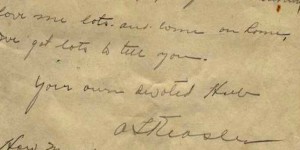
These days I am wandering through my stories to select the programs I will tell next month in Jonesborough, TN. I am thrilled to be invited as Storyteller-in-Residence for the week – September 8 – 12 – at the International Storytelling Center and to tell 5 hour long programs of my work. This is also a wonderful opportunity to look through my work and think about what I have been doing with my storytelling these past thirty years.
Visual artists often stop and take stock and select works for a retrospective of their art work. Here is a chance to do the same with my story work.

When I read the Song-catcher by Sharyn McCrumb, a novel featuring a ballad handed down through generations of her southern family, I was impressed by the way she incorporates family history into her story.
I came to storytelling through genealogy and did much more of that when I first started telling stories. She inspires me to go back in that direction, asking new questions.
In the biography on her website Sharyn McCrumb talks about the two worlds of her parents. That’s true of my family too. My father’s family was proud of their social position, which was based on my grandmother’s father. He was a Mecklenburg County elected official and a very popular figure. When I looked up his obituary in the Charlotte Observer a huge picture of him stared back at me from the front page of the newspaper. My grandmother was a spoiled apple of his eye who had been schooled in a Catholic finishing school. I remember her as a tall, aristocratic looking woman who was not prone to spontaneous hugs, in fact, I don’t remember any displays of affection. The mother of eight children, she was a reader, a versifier, an Anglophile and an avid Bridge player. She was proud of her lineage, especially her Confederate roots, because she did not know her Revolutionary War ties. If she had looked into she would have found her Revolutionary War roots and saved me a lot of trouble later. She would have been proud of all those deep tap roots that came through her father’s paternal family.
Her father’s mother was an Irish immigrant, from Tipperary, Ireland who arrived in America in 1837. She came with an extended family before the potato famine. Maybe they were seeking religious freedom, because they had both money and a trade. She left us our Catholic faith. Her family arrived in America through Nova Scotia, went to Albany, New York for a time where they had family, and then came to North Carolina following the little known 1840s gold rush in North Carolina. She married a young doctor from Newton, NC and they had eight children.
Surprisingly no Irish stories have been handed down through the family. I was not raised on the stories she must have told her son and that one would think he told his daughter. And, that he might have told my father, his grandson. The newspaper articles I found about him say he was known as a storyteller and a wit.
I wish we had been left a legacy of Irish songs and stories like Sharyn McCrumb describes from her Appalachian family? Ever since I discovered my strong Irish heritage I have wondered about this.
Now, Sharyn McCrumb, in describing her family, opens the question for me from another perspective. I will dig a little deeper. I want to know why we don’t have our pockets filled with Catherine Lonergan’s stories.












